5 Ways Target’s Store Layout Tricks You Into Buying More
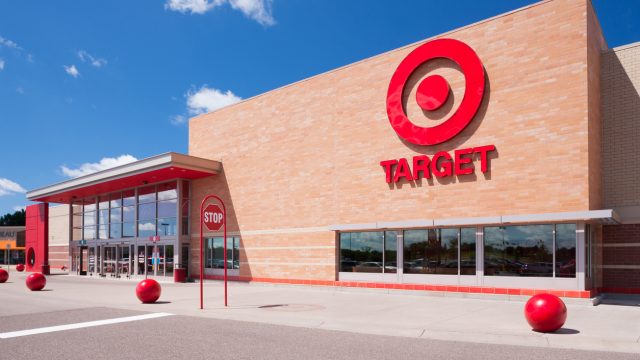
Even casual Target shoppers know that the Bullseye can be a convenient place to get everything you need. The retailer does a surprisingly good job of putting a ton of essentials under one roof—and often can make it impossible to pass up some of their legendary deals. However, it can also be surprisingly difficult to get in, grab what you need, and get out without succumbing to a bunch of extra purchases you never meant to make. Read on for all of the ways Target’s store layout tricks you into buying more, according to experts.
READ THIS NEXT: The 5 Best Times to Shop at Bath & Body Works, According to Experts.
1
They place seasonal items in the front.
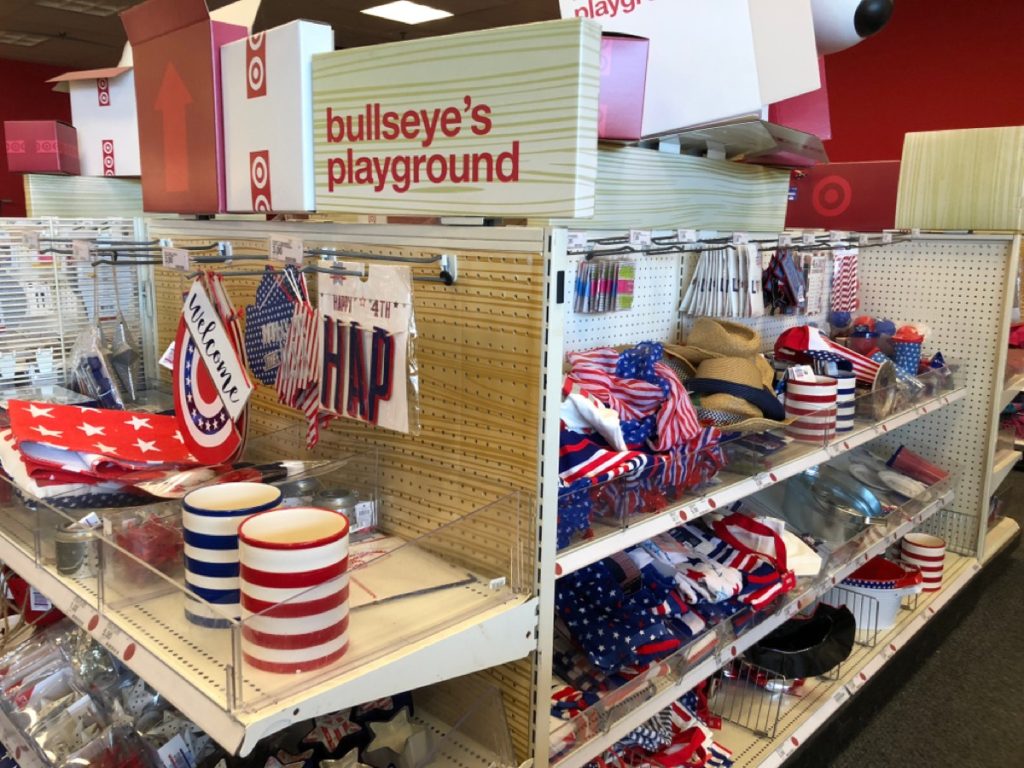
Even when you have a shopping list in hand, a trip to the store can sometimes still serve as a reminder that there are some unexpected items you might want to pick up. According to experts, this includes the kinds of products you may only buy once or twice a year. That’s why Target is likelier to keep many of these trinkets right where they know most customers will see them.
“While some larger seasonal items may be found further back, other things like holiday candies and small gifts may be found up front,” Julie Ramhold, consumer analyst at DealNews.com, tells Best Life. “Because of that, shoppers may be distracted when they first come in, which can prolong their trip and increase the odds of them giving in to impulse purchases.”
“These may be the kinds of things you don’t necessarily think about needing, but the values are appealing, and if you’re shopping after a long day, treating yourself may mean adding an unplanned purchase to your basket or cart,” she explains.
2
Refrigerated and frozen groceries are kept toward the back and to the sides.
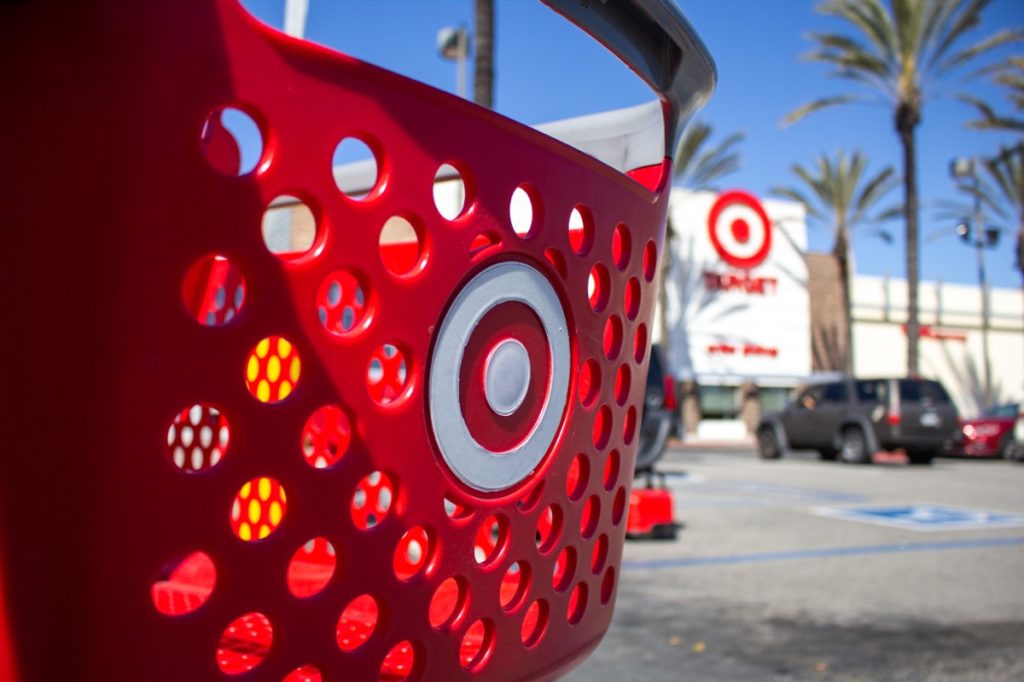
Besides the everyday essentials, Target can also be a convenient one-stop shopping option when picking up groceries. But like any other item on the retailer’s shelves, food plays a part in their strategic store layout that can wind up ballooning what you buy. Notably, experts say that Target uses a similar method to traditional supermarkets by tucking cold and frozen items away from the main entrance.
“Even if they’re off to one side, that means you basically have to walk past several aisles and other sections to get to staples like eggs, milk, and cheese, as well as frozen meals and snacks,” says Ramhold. “Obviously, this will encourage shoppers to spend more or at least raise the potential for them since they’re around the products for a longer period of time.”
3
Small, cheaper items tend to be front and center.
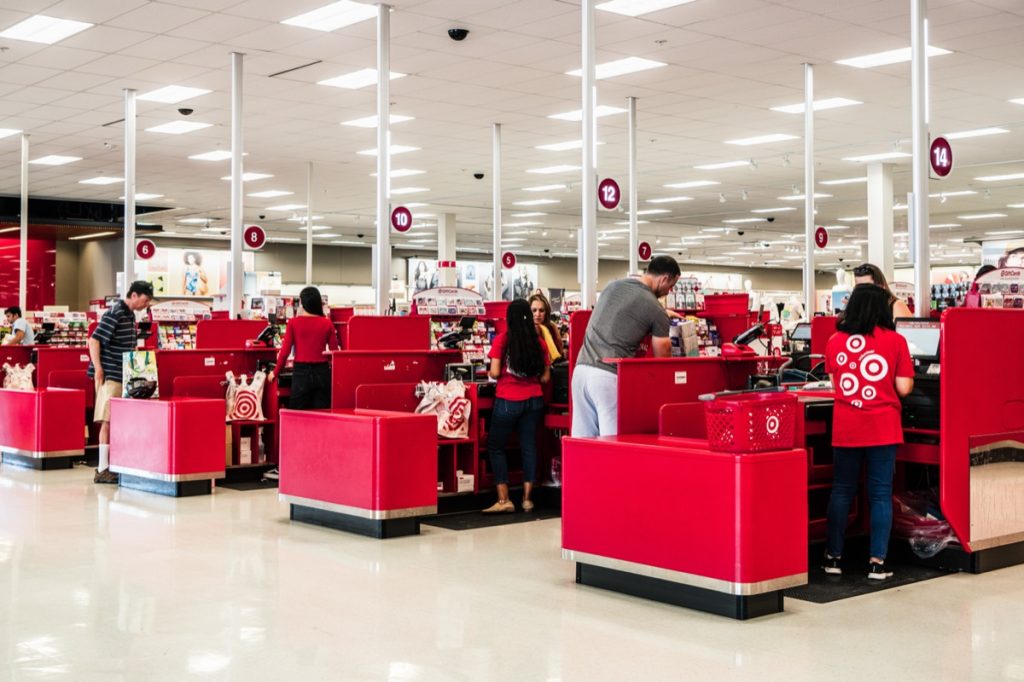
Sometimes, shopping at Target requires looking high and low for the very best deal. But experts also point out that some of the smaller trinkets or value purchases are usually placed in a prominent location, making them nearly impossible to pass up.
“This is typically a small area with products that change seasonally, and prices typically don’t go above $10,” Ramhold says. “Most items are usually $5 or less and provide such a great value it can be hard to turn down these things. You may not think you need a planting kit, for example, but then you see a tiny basil-growing kit for $3 and think, ‘why not?'”
“By offering these low-priced items up front, Target is kind of encouraging shoppers to fill up their baskets with little purchases that will add up,” she adds. “And this is at the beginning of their visit, too, which means some shoppers will be padding out their trips before they’ve even started picking up the items on their lists.”
4
Your daily coffee fix will be easy to find—and keep you perusing.
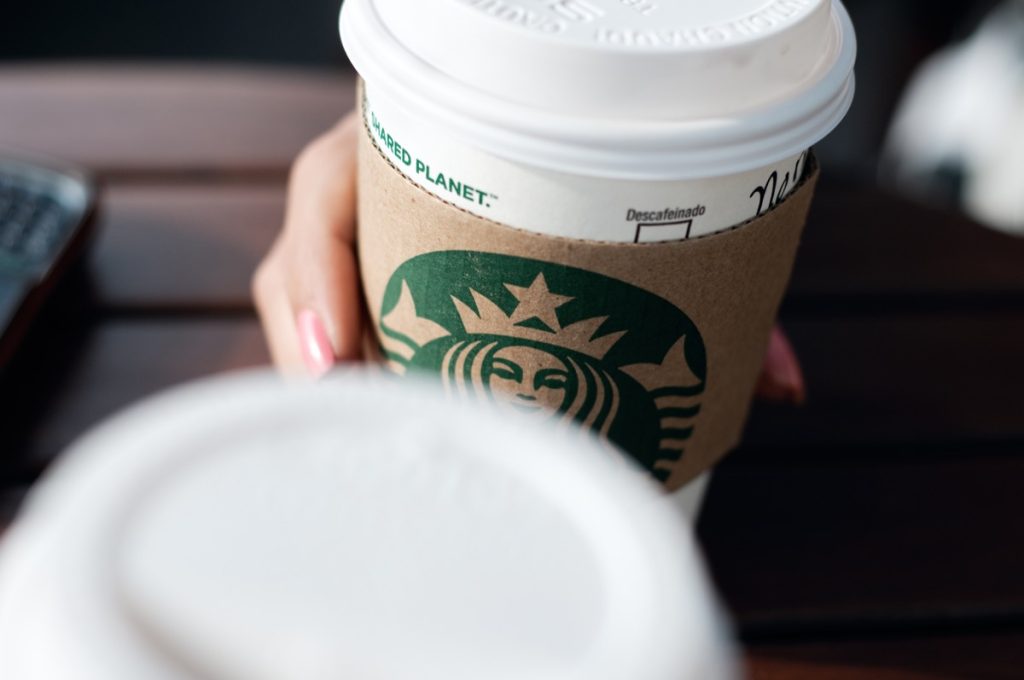
As if Target didn’t already have practically everything you need in one location, many stores also incorporate one other daily habit with Starbucks café outposts doling out your favorite caffeinated beverages. But apart from the pick-me-up it can give you, the company also knows that it can be an effective way to get some customers to buy more items.
“Not everyone will want a drink to sip on while they shop, especially if they’re in a hurry. But for some shoppers who aren’t in a rush, the Starbucks café up front can be a good incentive to treat yourself to a latte and then stroll leisurely through the store, rather than making an efficient trip and sticking to a strict list,” explains Ramhold.
5
Special products get top billing with the best in-store real estate.
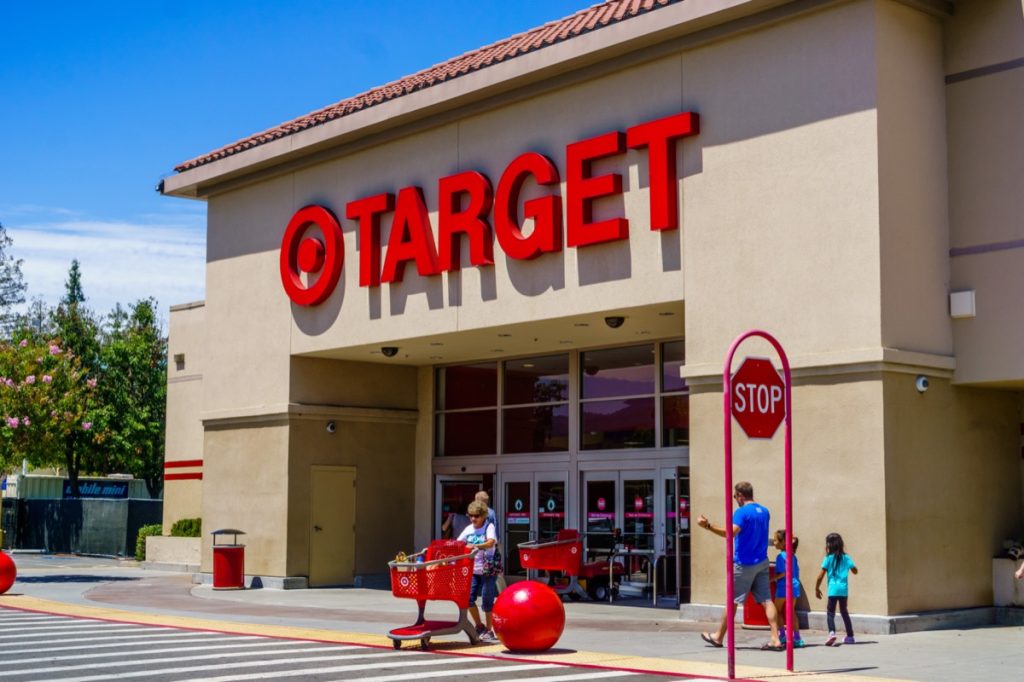
It’s no secret that some stores use aisle caps and strategically placed displays to alert customers to new or unique products. But in Target’s case, these items can also wind up with some prime real estate to ensure they get placed in more shopping carts.
“This is another section that often has items to entice shoppers, and even if it’s something that’s regularly available, it still may serve as an impulse purchase for some shoppers,” says Ramhold. “From sparkling water to limited editions of sweet and salty snacks to select alcohol items, these are designed to catch a shopper’s eye when they walk in. Then they’ll investigate further and add items to their cart.”
And it’s not just about an increased item count: It can also lead customers to spend more overall. “Even if it’s a planned snack purchase, like pretzels or chips, there are often only select brands or varieties on display at a certain time, which may mean shoppers opt for convenience rather than looking for the best price,” she explains.